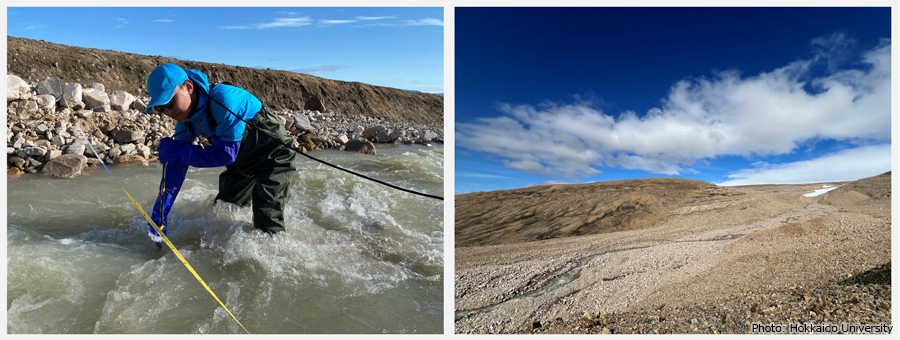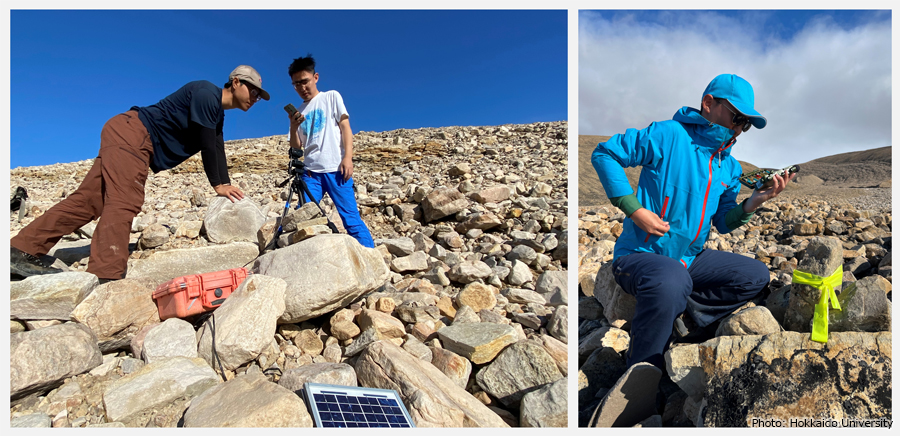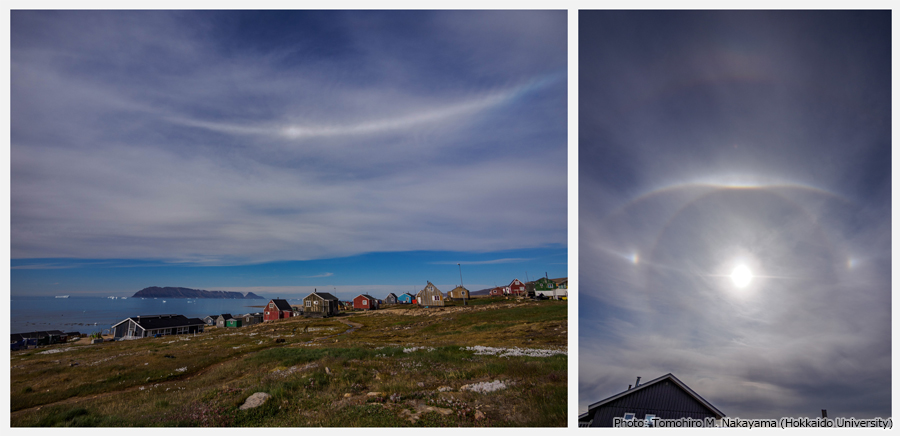Acoustic Monitoring of Glacier Runoff in Qaanaaq, northwest Greenland
Overseas Fellowship Program Participant:FY2024 Short-Term Program
Tomohiro M. Nakayama (Hokkaido University)
With support from the ArCS II Overseas Fellowship Program, I stayed in Qaanaaq, located in northwestern Greenland, for three weeks from July 17 to August 7, 2024, where I conducted discharge measurements, acoustic observations, and studies on river dynamics from glacier runoff.
In recent years, the melting of glaciers in Qaanaaq, northwestern Greenland, has increased, and floods caused by overflowing rivers from the glaciers have become more frequent. In 2023, a large flood submerged the road connecting the village and the airport, destroying the bridge. Continuous monitoring of river discharge and understanding the fluctuations in river dynamics have become crucial issues.

In traditional methods for river discharge measurement, as shown in Fig. 1, an observer enters the river to measure its depth and determine the shape of its cross-section. The water passing through that cross-section is measured with a current meter to calculate the discharge. Since only one point of discharge data is obtained from a single measurement, continuous water level data, which correlates with discharge, is also collected, and the discharge is estimated from the water level. To determine the relationship between water level and discharge, multiple observations are necessary to create a conversion formula, which requires a lot of effort.
Given this labor-intensive process, I am developing a method to measure river discharge without entering the river, using the sound of flowing water. There is a correlation between the intensity of sound and the size of the discharge, allowing us to estimate discharge by measuring sound. During this survey, four acoustic sensors were placed at regular intervals along the river, starting from the upstream, to capture the sound of the water.

Additionally, to determine whether changes in sound levels were caused by changes in discharge or by shifts in the distance between the sound source (the river) and the sensors, three time-lapse cameras were also installed (Fig. 2). This setup is expected to enable more accurate discharge measurements using acoustic sensors.

The village of Qaanaaq, where I stayed (Fig. 3), is located at a high latitude of 77.5 degrees north, well within the Arctic Circle. During my stay, it was in a state of midnight sun, with the sun continuously visible throughout the period.
While there, I witnessed several atmospheric optics caused by sunlight refracting and scattering through ice crystal clouds. Among these, the phenomenon I observed on July 26 was particularly memorable. It spanned the entire sky, and nearly every atmospheric optics that can theoretically be seen appeared simultaneously. The sky over Qaanaaq that day is something I will never forget.
